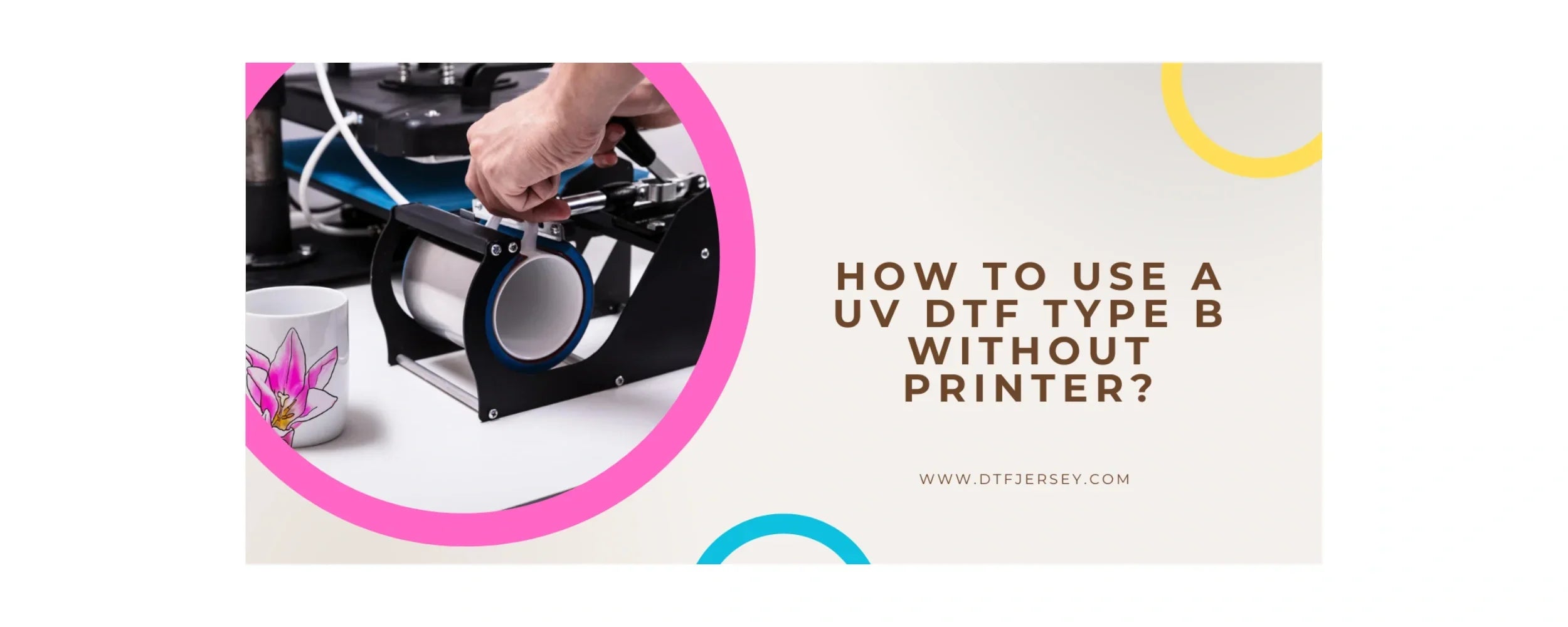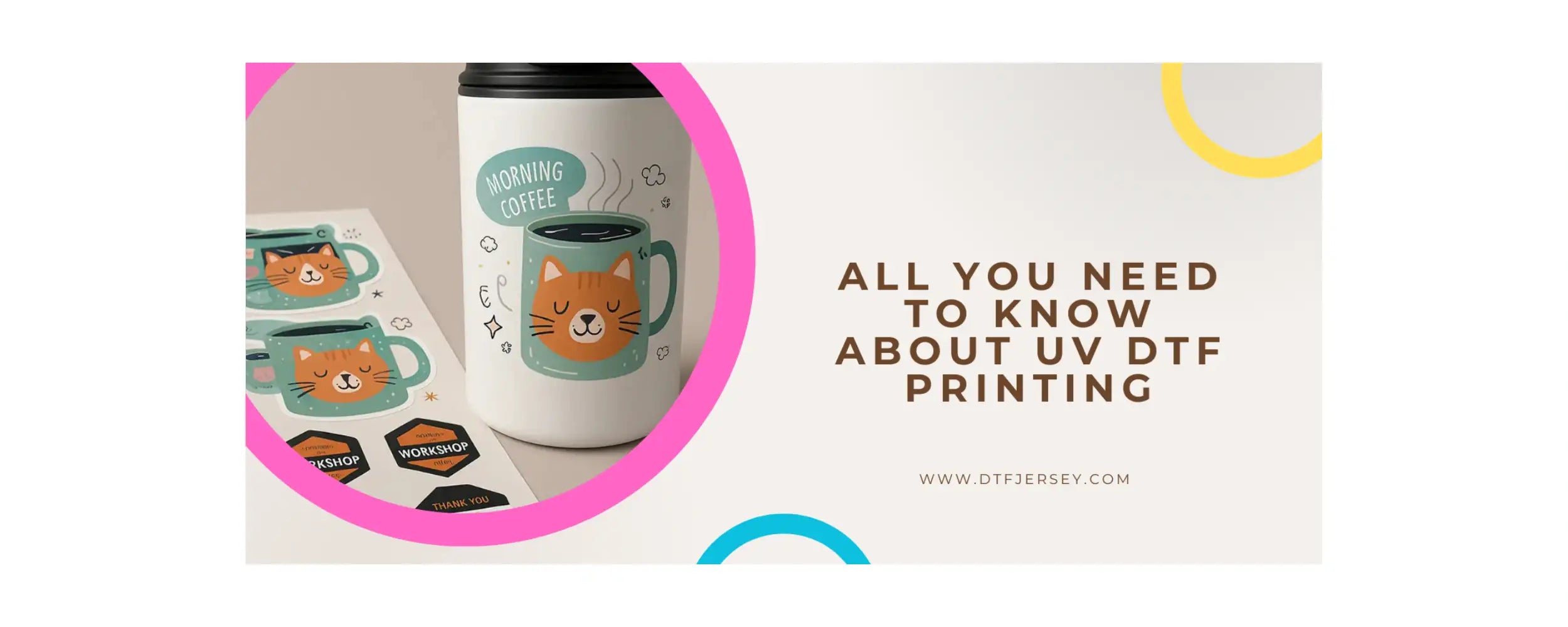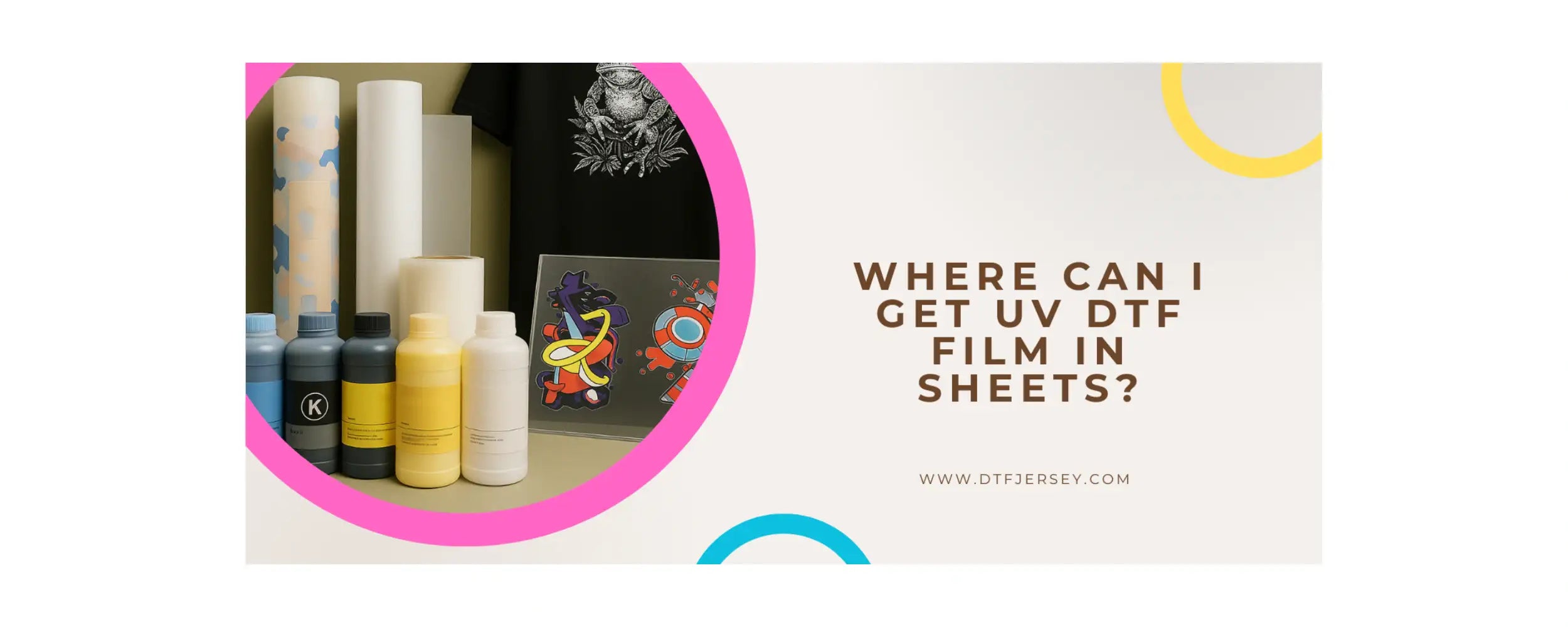
How to Use a UV DTF Type B without Printer?
The question of “how to use a UV DTF type B without printer?” can be answered with “It is possible with the supply of necessary materials and by following the right steps in application”. At this point, you should obtain UV materials, such as type B film, adhesive, a light source, and any additional elements. After the supply process, you can complete the process with steps ranging from design preparation to film removal.
What is UV DTF Type B?
UV DTF type B is a transfer film that is pre-printed and has a self-adhesive structure. Compared to other types, the ink is not printed onto a special film and transferred to type B. Instead, applications that are pre-printed on the film, cured with UV, and have a strong adhesive layer on the back are preferred. Thereby, the application process can be completed without a printer, laminating machine, or heat press.

Key Features and Benefits
There are some important features that distinguish B films from others. At this point, introducing the system’s benefits and qualities becomes important for the people and businesses that are planning to use it. You can see the key features of type B films as follows:
- It allows you to apply without using a printer. The film comes pre-printed and ready to use.
- The type B film can be applied simply by cleaning the surface and adhering it to the area.
- A type B option provides efficiency in small-scale projects with its fast and practical use.
- It is considered a low-cost solution for small and medium-sized businesses.
- The DTF film performs well on flat or slightly curved hard surfaces. So with that, it provides flexibility in use.
- Prints made with Type are resistant to water, scratches, color fading, and sunlight. A component prevents problems such as deformation.
- A film can be applied without any additional components thanks to its self-adhesive structure.
- Thanks to the system’s high-resolution application model, small-punto texts and detailed visuals can be printed clearly.
Small businesses and hobbyists can use the UV DTF film type B in their studies. Therefore, it becomes possible to achieve efficient results with budget-friendly and performance-oriented applications.
Understanding the Need for a Printer in DTF Transfers
In DTF transfer applications, the design must be printed with ink on a special film. Standard desktop printers are not sufficient for this process. At this point, DTF-compatible printers must be used. These printers work with pigments or special inks that enable customized studies. Dual-layer films or type A options are evaluated in these studies.

UV DTF film options have various types that focus on different features. Some sub-options are suitable for large-scale operations. Options such as type B are provided for projects that do not require customized printers and professional printing. At this point, a decision can be made on whether or not to use a printer, depending on the scope of the project and requirements.
Why You Might Want to Use UV DTF Type B Without a Printer?
If you have a small biz or personal project, budget-friendly and efficiency-oriented material selection is important. At this point, UV DTF type B options are a great choice for performance-oriented usage. You can use the system without a specialized printer and additional components. Thereby, you achieve the visual impact you want while reducing costs.
Steps for Using UV DTF Type B Without a Printer
The answer to the question, “how to use UV DTF B type without a printer?” can be as follows; you can follow the process including design preparation, material selection, application and control steps. You can see detailed explanations of the mentioned steps below:
Step 1: Preparing Your Design
The first step in the UV DTF type B application is to prepare the custom design you want to transfer. For printerless processing, you must arrange your design in a pre-printed format. Make sure that the cut edges of the design are clear, the colors are vivid, and the resolution is high. This will prevent visual quality loss after application.
In order to prevent foreseeable errors during the preparation phase, you need to be familiar with the characteristics of the film. You should arrange the text and visual components on the design according to the relevant characteristics.
Step 2: Selecting the Right Materials
It is important that the film, tape, and UV light source you use for the UV DTF type B method are compatible. At the same time, the surface must meet the formal requirements. Smooth materials such as glass, metal, wood, or hard plastic can be preferred as surfaces. In addition, using a high-quality type B film and a strong adhesive base prevents deformation of the transfer.
You should carefully examine the qualities of the UV DTF type B film you will use in the selection process. In this way, you can learn about compatible surfaces and get detailed information about the application process. It will also help you prevent potential errors.
Step 3: Applying the Transfer to the Substrate
In the application process, you should position the UV DTF type B film onto the material. You can use tools like a brush to prevent air bubbles and other issues. After the application, pressing is an important point to make the pressure permanent.
Step 4: Protective Film Removal & Finishing
At the latest step, you can remove the protective film from the material to finish the process. For permanent results, you should be careful about the conditions, such as heat, environment, and light, suitable for the film. Thereby, problems such as peeling, disintegration, and wear are less common over time.
Troubleshooting Common Issues
The application process has a practical structure. However, you should take a point for preventing common issues. One of the fundamental mistakes is the problem of adhesion during application. To prevent air bubbles, the process must be followed in a straight line on a horizontal or vertical curve. At the same time, tools such as brushes and spatulas should be used.
Although the procedure has advantages in terms of resolution, legibility issues may arise with small font sizes. Therefore, it is necessary to research and check the compatibility of font sizes with printing before proceeding. With the check process, preventing potential problems becomes possible.

Advantages of Using UV DTF Type B Without a Printer
Type B applications without a printer offer advantages in many different ways. The main advantages include the opportunity to work in an economical and performance-oriented manner. Other advantages are as follows:
- Not requiring a professional printer provides a cost advantage for small businesses and individuals.
- It eliminates difficult printing processes with its fast and practical use.
- High-resolution display allows small text to be legible.
- Images are processed at average and above resolutions. It provides an aesthetic advantage for resolution for study.
The application is optimally structured in terms of budget and usage. Also the process is suitable in terms of high-resolution. However, the use of printer-based dual-layer films may be advantageous for large-scale operations.
Conclusion
UV DTF type B is a transfer film that allows you to use it without a printer. The element has got a pre-printed and cured structure. You can use the system for your small and medium scaled projects and hobby studies. Therefore, increasing the efficiency with budget-friendly and performance-focused solutions becomes possible.
You can review the type B film options with the DTF Jersey’s extensive product range. The firm’s products are well-documented for individuals and biz projects. After the shopping process, you can use the component in your studies. You also get support from the brand’s specialist for troubleshooting and information gathering.
FAQs
You can find more details and other frequently asked questions about this topic further down the page.
Can I Use UV DTF on Paper?
It is possible to use UV DTF on paper by paying attention to the main requirements. At this point, surface texture, adhesion strength, durability limits, and heat & pressure caution should be reviewed before the process. After the approval, you can use the component in your studies.
Does UV DTF Need a Heat Press?
The need for a heat press in UV DTF varies depending on the type of film used. Type A films adhere better to surfaces such as fabric with heat and pressure, while on hard surfaces, only gluing is sufficient. Whereas the type B films do not require a heat press as they come pre-cured and ready to be glued directly. Only light heat can be applied optionally to increase adhesion in Type B.
Can I Make UV DTF Stickers at Home?
Making UV DTF stickers at home is possible with type B films. Thanks to the premade structure, the related component can be used without a printer or curing process. Thereby, you can take clear outputs in terms of visual and text readability from your home.
How Do You Use an UV DTF Transfer?
UV DTF transfer can be used in type A, type B, or dual format. In type B, the pre-cured and adhesive film is directly applied to the target surface. The protective top layer is then peeled off.
Resources:
- https://www.mtutech.com/BlogforUVDTFPrinter/How-to-Use-a-UV-DTF-Type-B-Without-a-Printer-1437.html
- https://www.procolored.com/blogs/news/how-to-use-a-uv-dtf-type-b-without-a-printer
- https://www.dtfnc.com/blogs/dtf-insider/how-to-use-a-uv-dtf-type-b-without-printer


